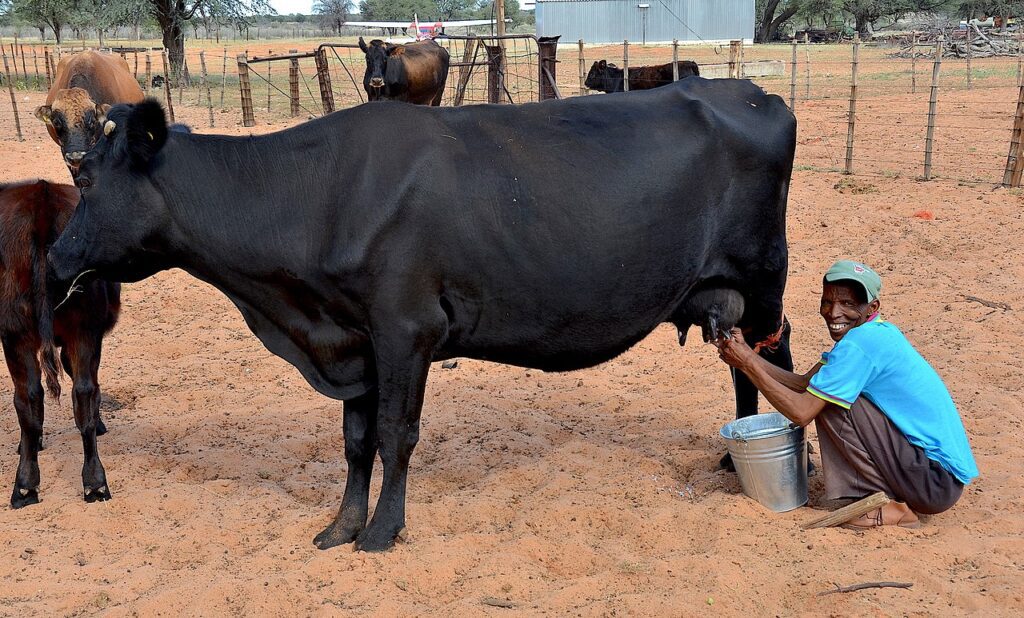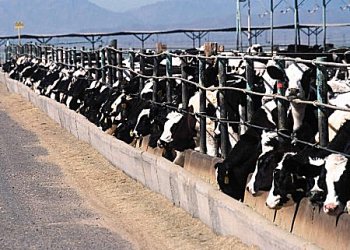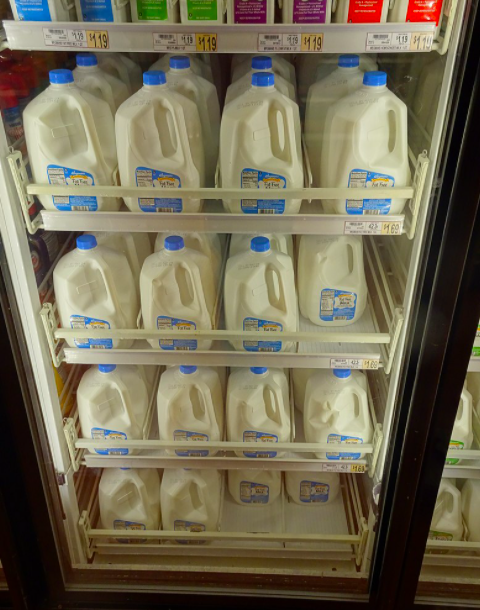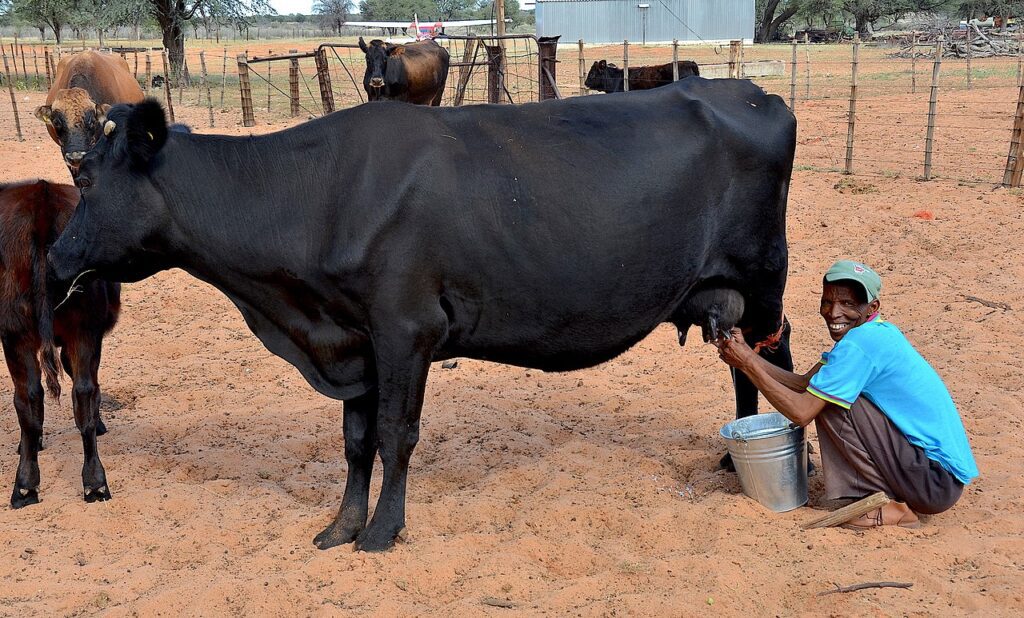Dairy farming has been practiced in India since ancient times. It is generally seen as a family business that has been passed down from generation to generation. In India, dairy farming and agriculture go by hand. Farmers put a few extra bucks in their full-time agribusiness, along with cows and buffaloes.

As time passed, this so-called family business made its way into a new era of dairy farming, which was much more organized, technologically advanced, and consequently more profitable. However, in earlier times, the difficult fact is that instead of the farmers/dairy farmers having an asset, it has turned into a loss-making business for them.
Low productivity and high cost of milch animals, their upbringing, their vaccination, lack of feed management and large manpower hours spent on animal care are affecting the dairy farming business in the country. Most dairy farmers started running away from business and faced difficulties in living and regenerating cows only to meet the domestic need for milk and to furnish additional milk production to milk collection centers.
The “White Revolution” in India changed the landscape of dairy farming and milk production in India in the 1970s.
Importance of selecting a good cow:
Purchasing cattle is critical in the dairy project. The selection of healthy and productive animals is of paramount importance for the successful operation of the dairy. This has a major impact on profit and most importantly, the future generation of cattle is also determined by the quality of the herd of the early cattle. These days young and enthusiastic farmers stand up to the challenge of dairy farming and especially with Indian cows. We make sincere efforts to educate those farmers and empower them with a checklist that, if followed, will ensure that they select a healthy and high-quality animal with greater success.
Consideration for selecting a cow for dairy in India:
All cows in India can produce some milk. It is usually too small to be collected for sale, although it may be sufficient for family consumption. Some of the dairy-bred cows found in small dairy beef herds and for cross-bred dairy cows (eg Friesian and Shorthorn breeds) are descendants of cattle often introduced by church missions to their herds. They can produce more milk than average animals. They should be chosen as nuclei to initiate dairy herds in India.
If you already have this cattle type, you can either start producing milk by feeding them better and using them as the start of a dairy herd and keep them as long as they have better milk-producing heifers Or are not replaced by cows. Then these old, early animals must be sold. There is a classical description of a triangle-shaped dairy cow that can be used for selection if you have enough dairy heifers to choose from.
The best heifers and cows, to begin with, are those of you who are calm by nature and who have some evidence of dairy blood. If there is none of these, start with quiet local animals with a history of successful breeding, and use dairy bulls on them to produce advanced offspring.

Hygiene for disease-free and fit:
The most important thing to keep in mind before starting a dairy business. It is recommended to ensure ease of access and availability to the vet at the farm. Always get the animal vaccinated on time by the vet. Leave them in a shed to keep them fit, as moving freely will reduce swelling in them. If there are more than 100 cows/buffaloes on a dairy farm, it is highly recommended to appoint a veterinarian on the farm itself.
A Clean And Hygenic House:
The basic requirement is to keep your cows and cattle happy and achieve greater productivity. It should be well ventilated; The floor should be non-slippery. The shed should be at least 900 sqm away from the side of the road and should not be in low-lying areas because water will first fill those areas during heavy rains. Generally, 40–80-Sq. Open space per foot per animal is required.
Myths associated with dairy farming:
There are a lot of scary claims about milk and how it is made, but when you look at the hype in real science and talk to farmers producing milk, you will find that new research and technology have made dairy farming even safer when people started eating and drinking it thousands of years ago.
A few of the myths are:
Myth: Pasteurization destroys the nutrients in milk.
reality: Studies show that pasteurization does not significantly reduce the nutritional value of milk; It simply kills bacteria to make it safe to drink milk. 1-2, Processed milk contains nine essential nutrients, including vitamins A and D, for even greater nutritional value. Both the FDA and CDC warn against drinking raw milk due to dozens of outbreaks of food-borne diseases associated with the consumption of raw milk products.
Myth: It is cruel to separate calves from their mothers
Reality: When calves are born for the first time, they need protection from big cows from stepping in and sharing germs, so farmers put them in individual pens, such as human infants on the plane for protection. Let’s put When the calves get a little older, they socialize with other cows their age, and they later join the adult herd with their mothers.
Myth: Dairy farms are bad for the environment.
Reality: Most dairy farmers live and nurture families on their farms, and plan to give those farms to their children, which means they have very personal care for the land, air, and water Inspiration.
Here are some ways dairy farmers protect the environment:
Many dairy farmers reuse waste as fertilizer; Some also have methane digesters that convert waste into electricity.
Milk farmers rushed each drop of water out of the farm barns.
Dairy farms are too strict environmental standards set by many government agencies.
Dairy farmers invest in research to find new ways to protect the environment.
Myth: Milk is full of antibiotics.
Reality: Sick cows are sometimes treated with antibiotics, just like sick people are. But these cows are milked separately from the healthy cows until the antibiotics are out of their systems. As an extra precaution, all milk is tested – multiple times – before it’s sold, and if it tests positive for even the slightest amount of antibiotics, farmers dump the entire batch. They have safe ways of discarding the milk, and it never reaches the store.

Myth: Dairy cows are mistreated.
Reality: Dairy farmers care deeply for their cows! Dairy cows are the livelihood of the farmers, so taking care of them is a farmer’s priority. That means that every single day of the year, even on holidays, even when the weather is bad – especially when the weather is bad – farmers are out taking care of their cows. A farmer can’t rest or eat until the cows are comfortable and fed.
Here are some specific ways farmers take care of their cows:
Cows get regular checkups from veterinarians.
Cows have access to fresh food and water 24 hours a day.
Cows’ diets are specially formulated by nutritionists.
Cows live in shelters designed to keep them cool or warm, depending on the climate and season.
Cows get manicures to keep their hooves healthy.
Top high demand cattle breeds in India:
Gir
This cattle breed originates from the Gir forests of South Kathiawar in Gujarat and is found in the adjoining areas of Rajasthan and Maharashtra. It is also known as Bhadavari, Desan, Gujarati, Sorathi, Kathiawadi, and Surti. The horns of the Gir cattle are awkwardly curved, giving the appearance of a ‘half-moon’. Its milk yield ranges from 1200 to 1800 kg per liter. This bread is known for its hardness and immunity.
Red Sindhi
Lal Sindhi is mostly found in Karachi and Hyderabad districts of neighboring countries Pakistan. It is also called Sindhi and Red Karachi. The color of the body of this cattle breed is radically different from that of dark red light and white stripes. Its milk yield ranges from 1100 to 2600 kg. Red Sindhi is widely used in crossbreeding programs.
Rathi
Rathi is another milch animal found in the arid regions of Rajasthan. This breed is believed to have developed from the amalgamation of Sahiwal, Lal Sindhi, Tharparkar, and Dhanni breeds with the spread of Sahiwal blood. Cattle are skilled and good millers. They produce 1560 kg of milk and the yield of milk production ranges from 1062 to 2810 kg.
Ongole
This cattle breed is of Ongole taluk in the Guntur district of Andhra Pradesh. They are large fleshy cattle with well-developed humps. Ongole is suitable for heavy draft work. They are also known as Nellore and their average milk yield is 1000 kg/lactation.
Deoni
Deoni originated in western Andhra Pradesh but is also found in the Marathwada region of Maharashtra and neighboring Karnataka. Denny’s milk yield is 636 – 1230 kg per lactation and his cavity interval averages 447 days. The bull is used for heavy farming.
Kankrej
This cattle breed originated from the southeast Rann of Kutch, Gujarat, and neighboring Rajasthan (Barmer and Jodhpur districts). The color of the cattle varies from silver-grey to iron-gray/steel black. Kankrej is quite popular because it is fast, powerful, and cattle. It is used for tillage and carting. Cows are also good milkers and yield about 1400 kg per lactation.
Tharparkar
This breed originated in the Tharparkar district (Pak) of undivided India and is also found in Rajasthan. It is also known as Gray Sindhi, White Sindhi, and Thari. Tharparkar is a medium-sized cattleman with song-shaped horns. His body color is white/light brown. Bulls are suitable for plowing and casting. Apart from this, milk production of milk is from 1800 to 2600 kg.
Hariana
The Hariyan breed originates from the Rohtak, Jind, Hisar, and Gurgaon districts of Haryana, but is equally popular in parts of Uttar Pradesh, Punjab, and Madhya Pradesh. Bulls are considered to be powerful working animals. Haryanvi cattle are the appropriate milkmen giving 600-800 kg milk per liter of milk.
Krishna Valley
It originates from the black cotton soil of the Krishna River watershed in Karnataka and is also found in the border districts of Maharashtra. Cattle are large in size, with a huge frame with a small body built of deep, dull. Its tail almost reaches the ground. Bulls are very strong and thus plowing and valued for their good working qualities. The average yield is 900 kg per milk yield.
Sahiwal
Sahiwal originated in the Montgomery region of undivided India (now in Pakistan). This cattle breed is also known as Lola, Lambi Bar, Teli, Montgomery, and Multani. Sahiwal is the best domestic dairy breed in the country. The average milk yield of Sahiwal is 1400 to 2500 kg per liter. Can be found in many parts of India such as Haryana, Punjab, Delhi, and Uttar Pradesh.
Conclusion:
India is one of the largest agricultural economies, which has been closely associated with dairy farming since the past. Lately contributing 4% to the total GDP. In addition, the dairy industry actively contributes to the economy of many communities, regions, and countries. History is proof that dairy farming has played the most important role which determines the prosperity and wealth of our nation. The Center has initiated several schemes to develop dairy farming and India’s dairy sector whose demand is increasing throughout the year. Apart from this, the dairy business provides a tool for socio-economic development and also gives you good earnings.


